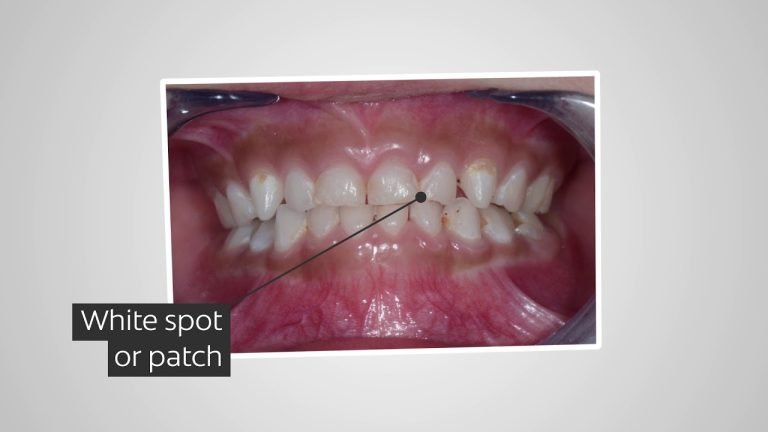Early Signs of Tooth Decay: Recognizing White Spots on Teeth

Are you noticing white spots on your teeth? It could be an early sign of tooth decay. These early stage indicators are important to catch and address before they progress into more serious dental issues. In this article, we'll explore the causes of white spots on teeth and how to prevent and treat them for a healthier, brighter smile.
Is tooth decay white when it starts?
Yes, tooth decay can start as a white spot on the tooth. This white spot is a sign that minerals have been lost and is an early indication of decay. However, if caught early, tooth decay can be stopped or even reversed at this stage. It's important to keep an eye out for these white spots and address them promptly to prevent further decay.
What is the cause of the white spots on my 1 year old's teeth?
If you've noticed white spots on your 1-year-old's teeth, it could be due to fluorosis, a condition caused by ingesting too much fluoride while their teeth are still developing. Fluorosis is typically a cosmetic issue and the white marks are usually faint and speckled, with little to no impact on the health of the teeth.
It's important to note that fluorosis can occur if your child is exposed to excessive fluoride through sources like water, toothpaste, or supplements. To prevent fluorosis, be mindful of the amount of fluoride your child is exposed to and consider using fluoride-free toothpaste for young children. If you're concerned about the white spots on your child's teeth, consult with a pediatric dentist for personalized guidance and treatment options.
What is the appearance of the beginning of tooth decay?
The beginning of tooth decay may appear as white spots on the surface of the teeth, indicating the early stages of demineralization. These white spots are a sign that the enamel is starting to weaken and may eventually lead to a cavity if left untreated. It's important to address these early signs of decay to prevent further damage to the teeth.
As tooth decay progresses, the white spots may turn brown or black, signaling the formation of a cavity. Bacteria and plaque can continue to eat away at the enamel, causing the decay to spread. Regular dental check-ups and good oral hygiene practices can help prevent and treat these early signs of decay before they develop into more serious dental issues.
In some cases, tooth decay may not exhibit noticeable symptoms until it has progressed significantly. This is why it's important to maintain regular dental appointments and practice good oral hygiene habits to catch and address any signs of decay early on. By taking proactive measures, individuals can prevent the progression of tooth decay and maintain a healthy smile.
Spotting Trouble: Understanding White Spots on Teeth
Are you noticing white spots on your teeth? Don't ignore them! These spots could be a sign of dental trouble, such as enamel erosion, mineral deficiency, or early tooth decay. It's important to understand the underlying cause of these white spots in order to address the issue and prevent further damage to your teeth. Whether it's changing your oral hygiene routine, adjusting your diet, or seeking professional dental treatment, taking action early can help maintain the health and appearance of your smile. Don't let those white spots go unnoticed – take the necessary steps to keep your teeth strong and bright.
Don't Ignore the Signs: Early Detection of Tooth Decay
Are you experiencing tooth sensitivity, pain when biting down, or discoloration on your teeth? Don't ignore these signs – they could be early indicators of tooth decay. Early detection of tooth decay is crucial in preventing further damage and avoiding more extensive and costly dental treatments. By paying attention to these warning signs and seeking prompt dental care, you can preserve the health and integrity of your teeth.
Regular dental check-ups and practicing good oral hygiene are key in detecting and preventing tooth decay. Don't wait until the signs of decay become severe – take proactive steps to maintain your oral health. By staying vigilant and addressing any potential signs of decay early on, you can save yourself from the discomfort and expense of advanced dental issues. Don't ignore the signs – prioritize early detection of tooth decay to keep your smile healthy and bright.
In conclusion, early stage tooth decay can often go unnoticed, but the presence of white spots on teeth is an important early sign to look out for. By being aware of these indicators and seeking early intervention from a dental professional, individuals can prevent the progression of tooth decay and maintain optimal oral health. Remember, early detection and proactive care are key to preserving a bright and healthy smile for years to come.
